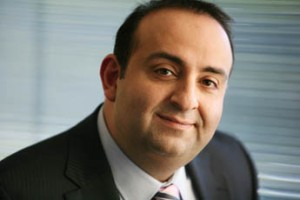mSkin’s Dr Liz McCulloch offers some advice on how to look great for your age.
Whether it’s your sleeping patterns, stress levels, eating habits, exercise regime or skincare routine – all of this has an impact on your face and the health of your skin.
It makes sense that if you want to bring about any changes in the way you look, you’ll have to make a few changes in the way you live.
Here are ten ways of reviving your skin, with nothing to lose but a few wrinkles!
1. Protection from the sun
Exposure to ultraviolet light breaks down collagen, causes age spots, deep wrinkles and sagging. Wear sunscreen that is broad spectrum (UVA/UVB) all year round to reduce the risk of future damage and to protect you against skin cancer.
Tip: don’t forget to protect the tops of the ears, the hands and the “V” of the neck.
2. Nicotine
There is evidence that smokers suffer from more lines and wrinkles than non- smokers. Nicotine causes narrowing of the blood vessels in the top layers of your skin. This impairs blood flow to your skin, reducing the amount of oxygen and nutrients it gets, such as vitamin A. The thousands of chemicals in tobacco smoke damage collagen and elastin, which are fibers that give your skin its strength and elasticity. Pursing of lips when inhaling and squinting of eyes to keep out smoke also cause wrinkles.
Tip: your GP surgery can book you an appointment for Smoking Cessation Advice and Support.
3. Avoid sugar
Sugars break down collagen and accelerate ageing in the skin, leading to sagginess. Cutting down on the sweet stuff will make your skin firmer, noticeably clearer and brighter.
Tip: try a sugar-free day and if it goes well extend it to a week or even a month.
4. Practise relaxation or take up meditation
Stress is ageing. Getting into the habit of relaxing your face, whether its through deep breathing, yoga or meditation will ease the lines of tension and worry that we all develop with the years. Relaxing also aids sleep – the time when cells are busy repairing DNA damage from the day before. Beauty sleep really isn’t a myth!
Tip: get up 15 minutes earlier every day to practice meditation or simple stretches.
5. Wrinkle-relaxing treatments and Dermal Fillers
Forget frozen foreheads, it’s not about looking ten years younger overnight. It’s okay to have a few laughter lines but injections of Botulinum Toxin A can prevent and soften facial expression lines, such as frown lines and crows’ feet. Dermal fillers can make an immediate difference to laughter lines and increase the volume beneath the skin, giving a fuller, more youthful appearance.
Tip: ensure the person offering the treatment is professionally trained, qualified and experienced.
6. Laser treatments and chemical peels
Intense pulsed light treatment (IPL) can be used to remove age spots and fine lines caused by too much ultraviolet exposure. The laser treatments smooth wrinkles by destroying old skin and forcing the skin to regenerate itself, breaking up the pigment that forms the spots. Two or three treatments are usually required, depending on the extent of pigmentation. A course of skin peels is another effective way to remove older, mottled, wrinkled skin and reveal fresher layers beneath.
Tip: do your research and make sure the procedure is carried out by a healthcare professional.
7. Drink plenty of water and cut down on alcohol
When we’re dehydrated the body uses the water available for essential organs such as the heart and liver. The skin is not given biological importance. Boosting your intake ensures that water, needed for skin cell formation, goes to the skin too.
Drinking water improves the way your insides work and good gut health is soon reflected in glowing skin. Alcohol not only dehydrates the body but it has a general inflammatory effect that encourages ageing.
Tip: sometimes our body confuses a thirst signal for a hunger signal. Drink a glass of water before a meal or a snack.
8. Use Retinoids
These vitamin A derivatives have been proven to boost collagen production (reducing wrinkles and preventing fine lines), even out discolouration, brighten skin tone, unclog pores and reduce acne. Retinoid creams make the skin supersensitive to sunlight so use them before bed and apply a sunscreen every morning.
Tip: Use retinoids sparingly and only at night.
9. Antioxidants
Antioxidants are our body’s defences against free radicals that may lead to premature ageing and disease. Eat plenty of anti-ageing foods, including
carrots and tomatoes (stimulates skin cell growth and builds collagen for skin elasticity). Hazelnuts and brazil nuts are good too, they contain essential fatty acids that help replenish collagen, naturally moisturise the skin and promote skin firmness.
Tip: jazz up green salads with grated carrot, beetroot and apple.
10. Exercise regularly
Anything that gets you moving will improve your circulation, which helps with skin renewal as it promotes blood flow and transports nutrients to the skin’s surface, creating a healthy, youth-enhancing glow.
Tip: sign up for a morning workout session with a friend and start getting your weekly endorphins flowing.
For more information about dermal fillers and wrinkle-relaxing treatments contact www.mskin.co.uk
Dr Liz McCulloch is a GP and Cosmetic Practitioner based in Brighton and Hove.





